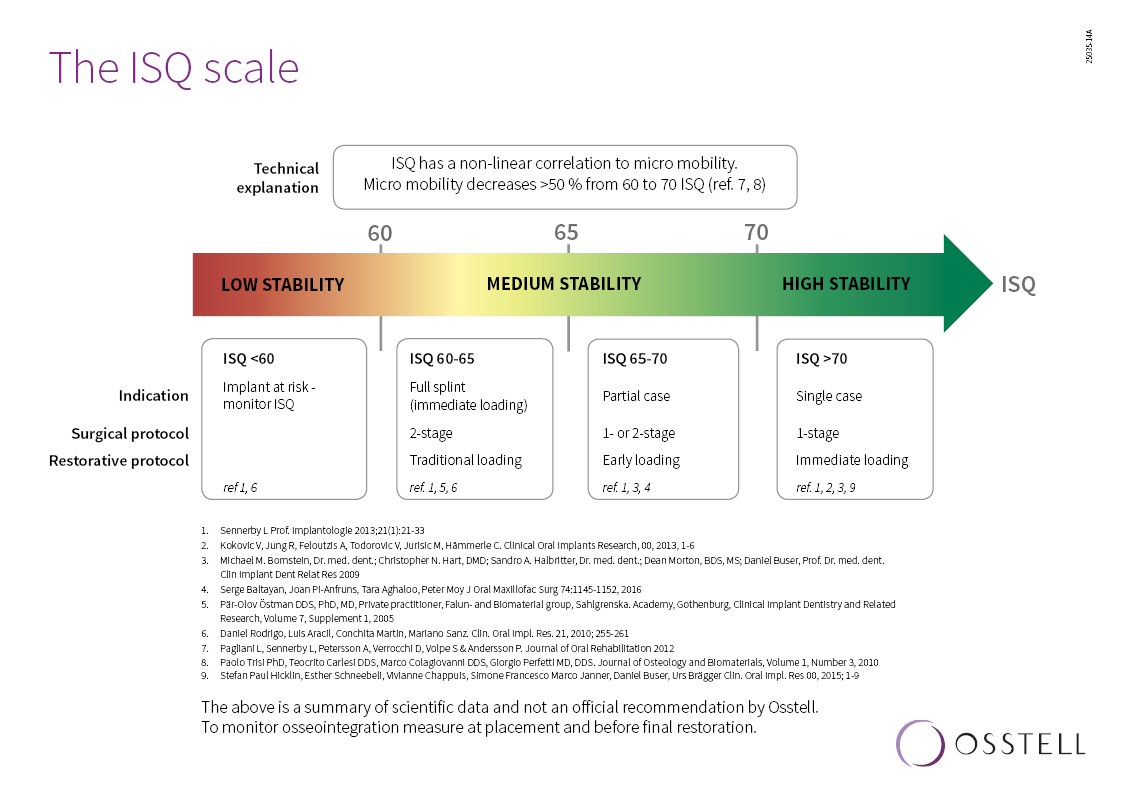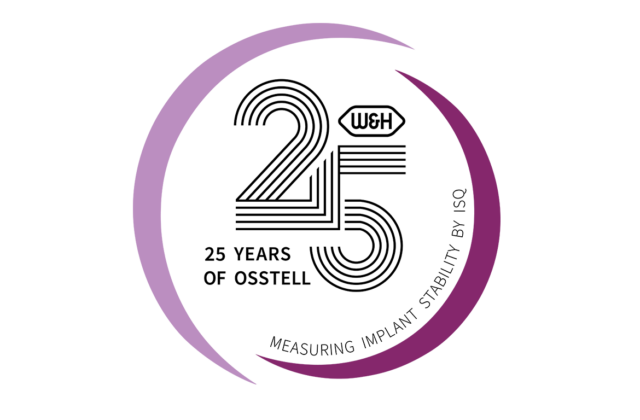
New additions to our Scientific Database
Mar 30, 2017
Our regularly updated database now includes more than 860 articles relating to Osstell and the ISQ scale. Below are a few of the studies that were recently published.
J Oral Implantol. 2017 Feb 20
Improvement in the initial ISQ through use of a modified surgical technique.
Diaz-Sanchez RM, Delgado-Muñoz JM, Hita-Iglesias P, Pullen KT, Serrera-Figallo MA, Torres-Lagares D.
BACKGROUND: To ensure that similar primary implant stability measured by resonance frequency analysis (RFA) could be obtained in different jawbone densities by using a specific surgical drilling protocol and, to correlate those RFA measurements with factors related to the implant design, width and length, we are performed a one-year prospective clinical study was carried out using 27 subjects. A total of 67 hydrophilic titanium implants were placed using a standard two-stage implant placement protocol. The bone type at each implant site was determined by evaluation of a preoperative, high-resolution cone beam computed tomography (CBCT) scan. A modified drilling protocol was used in softer bone (types 2, 3 and 4) that allowed for greater implant thread contact with the surrounding bone. The implant stability quotient (ISQ) was measured at four different times during the study: initially it was determined immediately after implant placement, then again at stage two uncovering surgery, then at six months’ post-placement and, and finally at one-year post-placement. Data collected immediately after implant surgery demonstrated a high correlation (R2=0.99) between the ISQ and bone type classification. An overall trend towards a higher ISQ was found over the one-year study period for all types of bone. Implants remained clinically and radiographically stable during the one-year study period. Our data allow conclude that the primary stability of two-staged loaded implants placed in different bone types can be optimized by applying this surgical drilling protocol during the implant placement. The ISQ method was found to be a reliable predictor of implant stability.
J Oral Implantol. 2016 Dec
Effect of Heavy Smoking on Dental Implants Placed in Male Patients Posterior Mandibles: A Prospective Clinical Study.
Sun C, Zhao J, Jianghao C, Hong T.
ABSTRACT: The objective of this study was to evaluate the implant stability and peri-implant tissue response in heavy smokers receiving dental implants due to partially edentulous posterior mandibles. Forty-five ITI Straumann dental implants were placed into the partially edentulous posterior mandibles of 16 heavy smokers and 16 nonsmokers. One implant in each patient was evaluated for implant stability after surgery and before loading, and for the modified plaque index (mPLI), modified sulcus bleeding index (mSBI), probing depth (PD), and marginal bone loss (MBL) after loading. Meanwhile, the osteogenic capability of jaw marrow samples collected from patients was evaluated via an in vitro mineralization test. For both groups, the implant stability quotient (ISQ) initially decreased from the initial ISQ achieved immediately after surgery and then increased starting from 2 weeks postsurgery. However, at 3, 4, 6, and 8 weeks postsurgery, the ISQ differed significantly between nonsmokers and heavy smokers. All implants achieved osseointegration without complications at least by the end of the 12th week postsurgery. At 6 or 12 months postloading, the MBL and PD were significantly higher in heavy smokers than in nonsmokers, whereas the mSBI and mPLI did not differ significantly between the 2 groups. The 1-year cumulative success rate of implants was 100% for both groups. Within the limitations of the present clinical study (such as small sample size and short study duration), which applied the loading at 3 months postoperation, heavy smoking did not affect the cumulative survival rate of dental implants placed at the posterior mandible in male patients, but heavy smoking did negatively affect bone healing around dental implants by decreasing the healing speed. These results implied that it might be of importance to select the right time point to apply the implant loading for heavy smokers. In addition, heavy smoking promoted the loss of marginal bone and the further development of dental pockets. Further clinical studies with larger patient populations are warranted to confirm our findings over a longer study duration.

